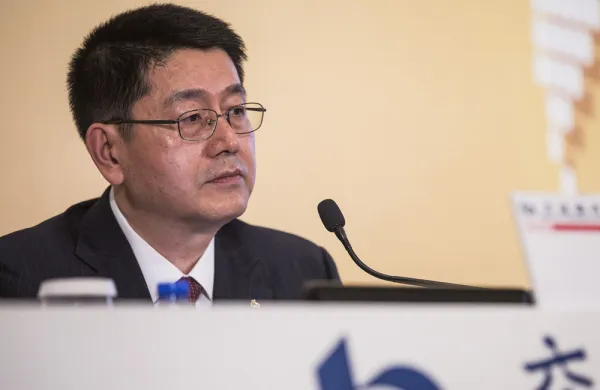Most legitimate bloggers and journalists reported on the China Investment Corporation’s annual report weeks ago. Good for them. Kudos. Personally, though, I like to let these annual reports marinate a bit; I find that a dash of ‘time’ really adds to the depth and rigor of my analysis.
Who am I kidding? The truth is that every time I sat down to read the CIC’s annual report I found myself utterly captivated by the b-roll footage throughout its pages; these action shots of (I have to assume) actual work getting done at the CIC were just too distracting.

Anyway, I finally managed to read the document in its entirety, and, I have to say; the CIC would appear to be doing very well. Not only did the Chinese SWF have a solid year in terms of financial returns, but it also appears to have made some important steps in terms of capacity building (which should help with future years’ returns).
For a description of some of the important organizational milestones, here’s some info directly from the annual report that I think is rather interesting:
“In 2012, we studied the asset allocation models of major institutional investors over the past five years and decided to maintain the Endowment Model as a basis for our asset allocation.”

“We also developed a policy portfolio to better align and balance our strategic asset allocation and tactical asset allocation, and thus contribute to overall portfolio integrity as well as to shore up disciplined and prudent management.”
Very smart. Go on...
“We continued to conduct research under the asset allocation framework and consolidated our research capacity to enhance analysis of macroeconomic dynamics. Risk control and management remained central to our daily work. In addition to monitoring and managing exposure to market and credit risks, we enhanced operational risk management and internal controls at the company level in a bid to strengthen comprehensive risk management.”
That’s actually what I would do. What else?
“As a long-term investor, we invested in assets such as infrastructure, energy, mining, and private equity. We also redoubled our efforts to strengthen post-investment management and optimize the portfolio structure in a bid to improve our in-house investment capacity.”

Managing assets post-close is one of the big factors that hinder direct investment programs within institutional investors. So I’m pleased to see the CIC focus on this issue. But there’s even more.
“Cultivating a corporate culture that captures the company’s vision and values has always been at the forefront of our endeavors, reinforced in the CIC Culture Consensus released in 2012. The CIC Culture Consensus embodies our hard work, innovation and steady progress in the five years since our inception. It speaks to the aspirations of CIC as an institution and of all our staff, whose professional commitment, diverse ideas and desire to make a difference foster our culture and values. A systematic expression of CIC’s mission, vision and core values, the CIC Culture Consensus will be a guide to enhancing the cohesion, work ethics and moral integrity of our staff as we go forward.”

Again, this is smart. I’m constantly pushing pensions and sovereign funds to think more about formalizing and institutionalizing culture; it’s one of the factors that can truly impart long-term thinking on employees.
Anyway, all of the CIC’s focus on operational excellence appears to be leading to highly successful investment decision-making; like the kind I imagine the fund experienced when this photo was snapped... (Dude on the right... is legit).







